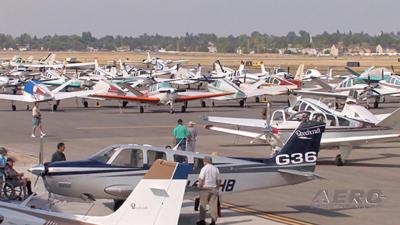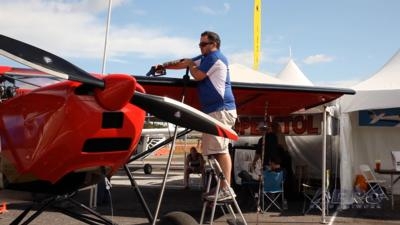Fri, Nov 05, 2021
Industry Groups Say Funding Needed for Unleaded Avgas
The EAA is among other industry parties engaged in a request to Congress to increase the level of government support and funding for sustainable, alternative aviation fuels.

Before Congress finalizes funding allocations for fiscal year 2022, the groups have asked the Appropriations Committee for Transportation, Housing and Urban Development and Related Agencies (THUD) in the Senate and House of Representatives to boost funding for the Alternative Fuels for General Aviation program.
The program is hoped to eventually create a functional, safe, certifiable, unleaded aviation fuel for use fleet-wide. The continued presence of leaded gasoline for piston-engined aircraft has been a vulnerable pressure point for local activists looking to shut down general aviation operations within their vicinity. Friction between new homeowners and airports is an increasingly common occurrence, often the result of ever-expanding suburban sprawl abutting vintage airfields originally placed far away from cities. Citing the environmental and health aspects of lead being dropped overhead (often far below the minimum levels to cause harm), activists have seen limited successes in banning AvGas, and by extension, small aircraft from their local aerodrome.

Projects to create a viable unleaded fuel have too often been funded entirely out of pocket by private entities in the industry, like GAMI’s high-octane avgas replacement. Government support for such initiatives would not only defray the considerable costs of certification, development, and iteration, but would signal to bureaucratic stakeholders that the project has the interest and investment of regulators. As seen in GAMI’s path to bring their G100UL to market, regulators have sometimes added undue burden and delay to the process, something that would likely be reduced with appointed, vested government managers familiar with the project. It remains to be seen whether the industry will get its wish, but the communal interest in healthier air and “greener” transportation could make the apportion a shoe-in.
Signees to the letter to Congress include EAA, GAMA, HAI, NATA, and NBAA, among others.
More News
From 2023 (YouTube Edition): "Ain’t Your Daddy’s Super Cub”—Don Wade Co-owned by Don and Ron Wade—the former of Don’s Dream Machines, a storied >[...]
Pilot-Rated Passenger Reported That The Pilot Did Not Adequately “Round Out” The Landing Flare And The Airplane Bounced And Yawed To The Right Analysis: The pilot state>[...]
Dead Reckoning Dead reckoning, as applied to flying, is the navigation of an airplane solely by means of computations based on airspeed, course, heading, wind direction, and speed,>[...]
Aero Linx: Lake Amphibian Club This website is created and sponsored by the Lake Amphibian Club, to help spread the word about these wonderful, versatile amphibians that can land j>[...]
“I am deeply honored to be sworn in as NASA administrator. NASA’s mission is as imperative and urgent as ever — to push the boundaries of human exploration, ignit>[...]
 Classic Aero-TV: In Praise of Alabamas Patriot Aircraft USA
Classic Aero-TV: In Praise of Alabamas Patriot Aircraft USA NTSB Final Report: Cirrus Design Corp SR22
NTSB Final Report: Cirrus Design Corp SR22 ANN's Daily Aero-Term (12.21.25): Dead Reckoning
ANN's Daily Aero-Term (12.21.25): Dead Reckoning ANN's Daily Aero-Linx (12.21.25)
ANN's Daily Aero-Linx (12.21.25) Aero-News: Quote of the Day (12.21.25)
Aero-News: Quote of the Day (12.21.25)




